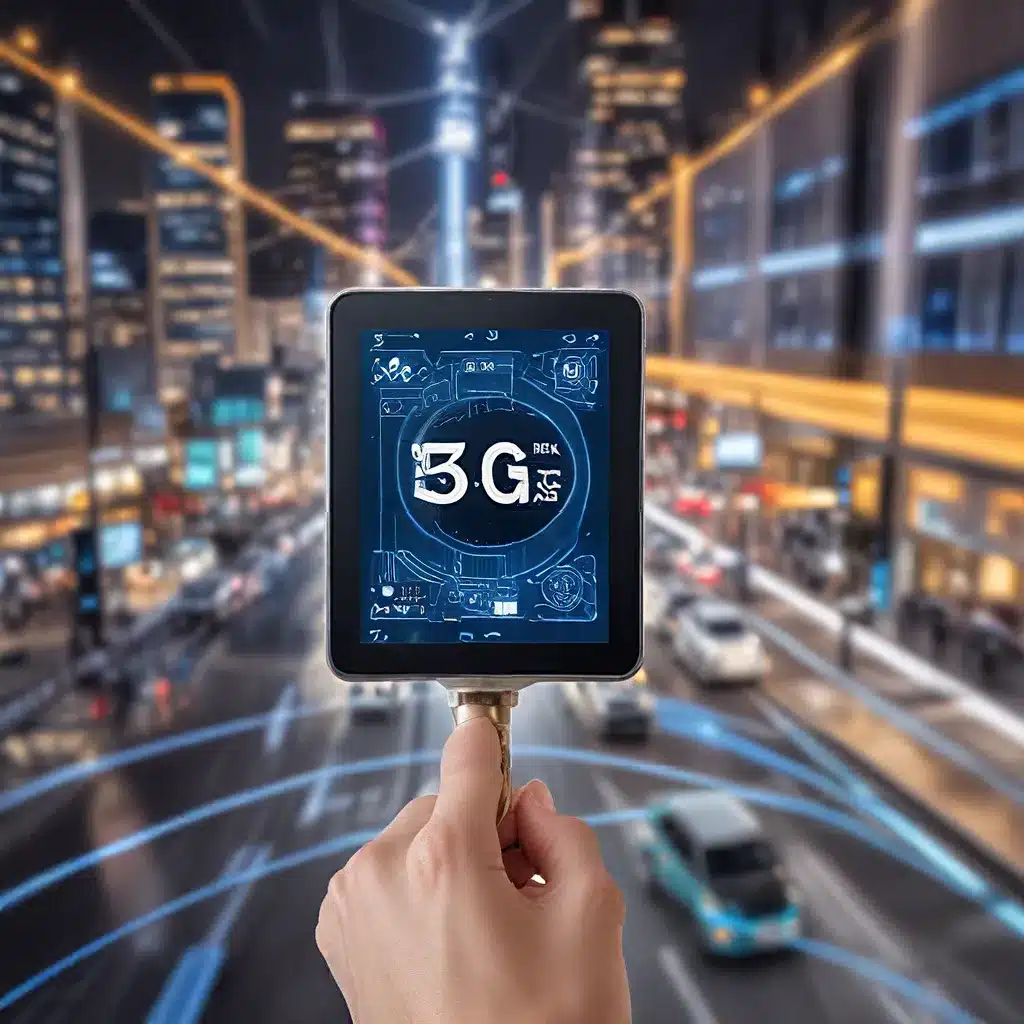
In the rapidly evolving landscape of sensor networks and the Internet of Things (IoT), the advent of 5G technology has ushered in a new era of unprecedented opportunities and challenges. As we harness the power of ultrafast connectivity and the ever-expanding array of sensor technologies, the importance of sensor calibration has become paramount in unlocking the full potential of this transformative ecosystem.
The Rise of 5G and Its Impact on Sensor Networks
The deployment of 5G networks has revolutionized the way sensor networks operate, enabling faster data transmission, reduced latency, and enhanced reliability. This ultrafast connectivity has opened the door to a new generation of IoT applications that demand real-time responsiveness, such as autonomous vehicles, industrial automation, and smart city infrastructure.
Cutting-edge sensor technologies have emerged as the backbone of these innovative IoT solutions, providing the ability to gather a wealth of data from the physical world. However, the successful integration of these sensors within the 5G-powered IoT ecosystem hinges on the accurate and reliable calibration of these sensing devices.
The Importance of Sensor Calibration in the 5G Era
Sensor calibration, a critical but often overlooked aspect of IoT system design, ensures that the data collected by sensors accurately reflects the real-world conditions they are monitoring. In the context of 5G-enabled IoT, this precision becomes even more crucial, as the increased data throughput and reduced latency amplify the impact of sensor accuracy on the overall system performance.
Inaccurate sensor readings can lead to a cascade of issues, from suboptimal decision-making in autonomous systems to inefficient resource allocation in smart city applications. Proper sensor calibration is essential in mitigating these challenges and unlocking the full potential of 5G-powered IoT.
Advancements in Sensor Calibration Techniques
Recognizing the importance of sensor calibration, researchers and industry leaders have been actively exploring innovative techniques to address the evolving needs of 5G-enabled IoT. Some of the key advancements in this field include:
Gaze-Independent Contactless Autorefractors
Gaze-independent contactless autorefractors represent a significant breakthrough in the field of vision care, eliminating the need for gaze alignment and improving the accuracy of refractive error measurements. This technology has the potential to revolutionize the way vision exams are conducted, democratizing access to vision care and reducing the burden on healthcare systems.
Wireless Roof Monitoring Systems
Wireless roof monitoring systems have emerged as a game-changer in the realm of infrastructure management. These affordable, high-performance systems leverage geolocation and wireless sensor networks to detect unsafe loads and movements on buildings, particularly flat commercial rooftops. This innovation can save lives and improve infrastructure lifecycle management, benefiting communities, especially those with limited resources.
Sensor Calibration in 5G Networks
As 5G networks continue to evolve, researchers are exploring new ways to integrate sensor calibration processes directly within the 5G infrastructure. By leveraging the enhanced capabilities of 5G, such as network slicing and edge computing, sensor calibration can be streamlined, automated, and tailored to the specific needs of individual IoT applications.
Challenges and Considerations in Sensor Calibration
While the advancements in sensor calibration techniques are exciting, there are still a number of challenges that must be addressed to fully realize the potential of 5G-powered IoT.
Sensor Drift and Aging
Over time, sensors can experience drift and aging, resulting in gradual changes in their calibration. This issue is particularly prevalent in harsh environments or applications where sensors are subjected to significant wear and tear. Developing robust calibration maintenance strategies is crucial to ensure the long-term reliability of IoT systems.
Sensor Interoperability and Integration
The proliferation of diverse sensor technologies and IoT platforms presents a challenge in ensuring seamless interoperability and integration within the 5G ecosystem. Standardization efforts and the adoption of open protocols are essential in facilitating the smooth integration of sensor calibration processes across different IoT systems.
Security and Privacy Concerns
As sensor networks become more pervasive, the security and privacy implications of sensor calibration cannot be overlooked. Ensuring the secure transmission and storage of calibration data, as well as safeguarding the integrity of the calibration processes, are critical considerations in the design of 5G-enabled IoT solutions.
The Future of Sensor Calibration and 5G-Powered IoT
The convergence of 5G technology and advancements in sensor calibration holds immense potential for transforming a wide range of industries and applications. Autonomous vehicles, smart city infrastructure, industrial automation, and healthcare are just a few examples of sectors that stand to benefit from the enhanced precision and reliability enabled by this powerful combination.
As we look towards the future, the continued development of sensor calibration techniques, coupled with the ongoing evolution of 5G networks, will be crucial in unlocking the full potential of the IoT ecosystem. By addressing the challenges and embracing the latest innovations, we can empower organizations and communities to harness the power of sensor-driven insights and ultrafast connectivity to drive innovation, improve decision-making, and enhance the overall quality of life.
Sensor networks and 5G-powered IoT hold the key to a future where the physical and digital worlds converge seamlessly. By mastering the art of sensor calibration, we can ensure that the data fueling this convergence is reliable, accurate, and ready to unlock unprecedented opportunities for progress and transformation.
Visit sensor-networks.org to explore the latest advancements, trends, and insights in the world of sensor networks and IoT.